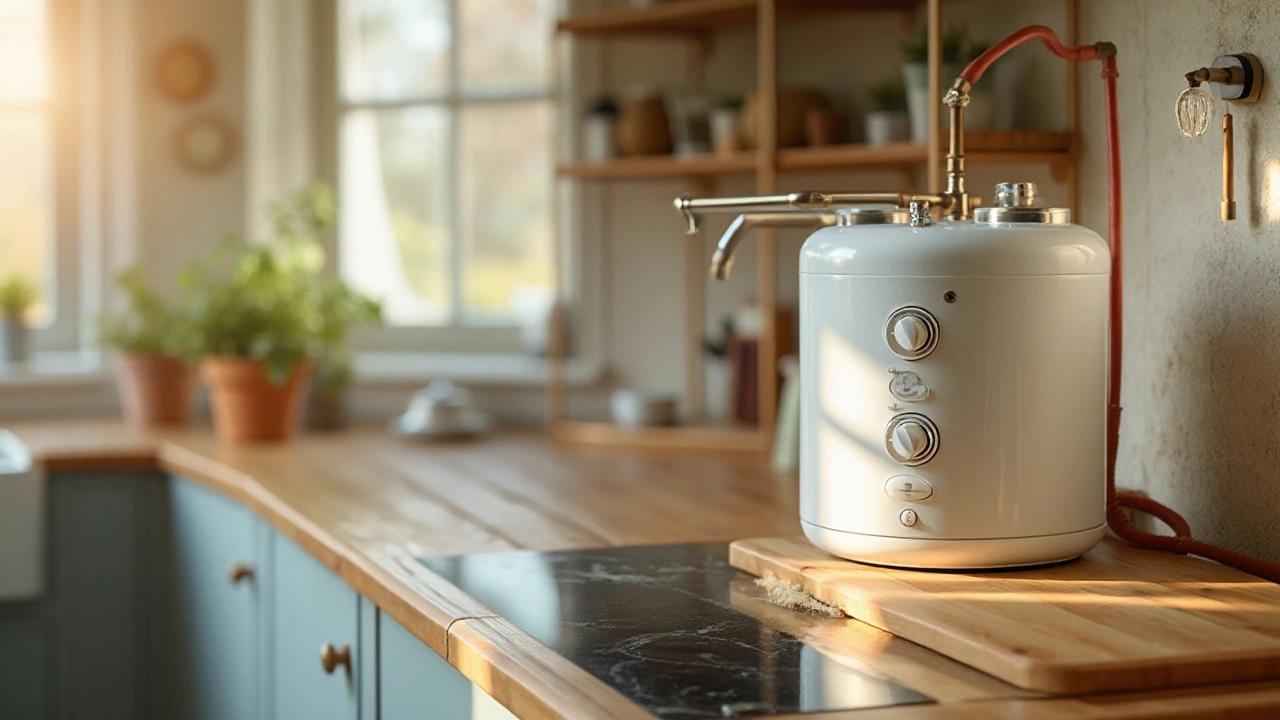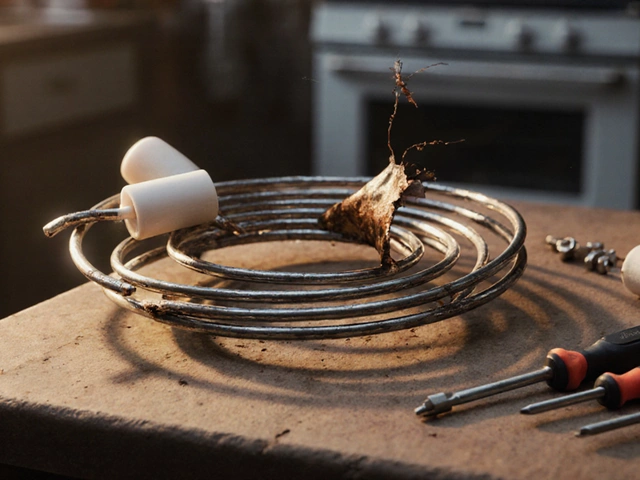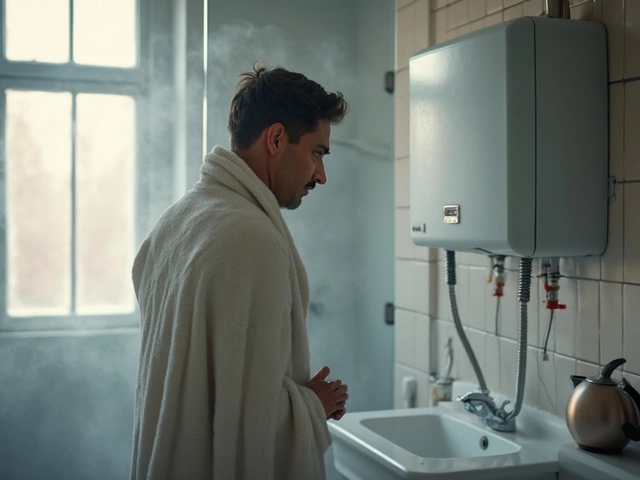Water heaters might not be the most glamorous appliances in your home, but they are certainly among the most hardworking. They help you enjoy warm showers, clean clothes, and sparkling dishes. Yet, we often forget that water heaters need care, too. One of the crucial maintenance tasks is flushing the tank, a process many homeowners overlook.
Flushing your water heater regularly can significantly enhance its efficiency and extend its life expectancy. If neglected, sediment can build up at the tank's bottom, leading to diminished performance and potentially costly repairs. How often should you be flushing your heater to keep it in top shape, though? The answer depends on several factors, including usage patterns and water quality in your area.
By the end of this article, you will know why flushing is important, how frequently it should be done, and how you can easily perform this task yourself if you're a DIY enthusiast. Ultimately, understanding these details can save you from unexpected cold showers and help you maintain a more energy-efficient home.
Why Flushing Matters
Ensuring your water heater runs effectively isn't just a matter of convenience but also of efficiency and cost-saving. A major component of maintaining this hardworking appliance is regular flushing. But why is this often overlooked task so critical in the first place? At the heart of it, every time your heater pulls in water, it also accumulates sediments—tiny particles suspended in the water which, over time, settle at the bottom of the tank. These sediments are mostly comprised of minerals like calcium and magnesium, which can solidify into hard scale when heated repeatedly. If not removed periodically through flushing, these sediments act as insulators, meaning your heater has to work harder to bring the water to the desired temperature, leading to increased energy consumption and reduced efficiency.
Even more crucially, an unflushed heater can lead to significant problems down the line. The presence of excess sediment can cause strange noises, like popping or rumbling, which result from water heating beneath the crusty layer of sediment at the bottom. These are not merely annoying sounds—they indicate that your heater is overworking itself. Left unchecked, this can cause damage to the tank, result in leaks, or necessitate costly replacements long before the heater's natural lifespan is up. According to a study by the Water Quality Research Foundation, regular maintenance, including flushing, can extend water heater efficiency by up to 20%.
"Regularly flushed water heaters retain 90% of their heating efficiency," notes Karen R. Villazon, an expert in home appliance maintenance at the National Renewable Energy Laboratory. "This not only equates to saving energy but also to significantly lowering your monthly utility bills," she adds.There isn't a one-size-fits-all approach, though. How regularly you flush your heater can depend on local water hardness. In areas with hard water, sediment builds up faster, possibly necessitating more frequent flushes. On top of these reasons, flushing your water heater regularly also contributes to improved water quality. Sediments in the water heater can lead to discolored tap water and influence taste, phenomena that can often go unnoticed until they become severe.
A water heater that's well-maintained with regular flushing also allows for more stable water pressure. Sediment buildup can hinder the water flow within your heating system, affecting pressure when water emerges from taps or showers. By not overlooking this simple yet essential maintenance task, you ensure that your heater not only lasts longer but performs at its best while safeguarding you from unexpected breakdowns or increased utility expenses. Therefore, understanding how to flush your heater and make it part of your regular home maintenance routine is akin to providing your household with a little peace of mind.

How Often to Flush
Understanding how often you should flush your water heater is crucial for maintaining its efficiency and longevity. The frequency of flushing depends on several factors such as the type of water heater you have, the hardness of your water, and the overall water quality in your region. For many standard tanks, experts generally recommend flushing at least once a year. However, if your area is plagued by hard water, rich in minerals like calcium and magnesium, a semi-annual schedule may offer better results. These minerals can accumulate at the bottom of your tank, reducing its heating efficiency and causing an increase in your utility bills.
According to
James Harrison, a renowned HVAC specialist, "Routine flushing of your water heater is as important as changing the oil in your car. It enhances performance, saves energy, and extends the appliance's life."Let's consider the usage. If your household is larger and the heater is in constant use, sediment buildup might be more rapid, necessitating more frequent flushes. Regular maintenance checks can help you gauge when it's necessary, ensuring you're not flushing too seldom, which could lead to potential malfunctions, or too often, which might be a waste of time and resources.
Not all water heaters age the same way, and manufacturers might have specific guidelines that can help you decide on the flushing frequency. For instance, tankless systems might not require traditional tank flushing but still need occasional maintenance to prevent scale buildup. It's always wise to review the manual or consult with a professional if you're uncertain. Another practical tip is checking with your local water authority—they can provide insights about your area's water quality, helping tailor your maintenance schedule more effectively.
| Water Quality | Recommended Frequency |
|---|---|
| Soft Water | Once a year |
| Hard Water | Twice a year |
So, while a once-a-year rule works for most, adjusting for local conditions and usage habits will give you the best performance from your water heater. Always pay attention to signs like popping noises during operation or inconsistent water temperatures—these might indicate sediment buildup and signify that a flush is long overdue. Recognizing these cues early can prevent bigger issues down the line, helping you maintain a steady supply of hot water any day of the week.

Step-by-Step Guide to Flushing
Flushing your water heater might seem like a daunting task, but it is something most homeowners can handle with a bit of guidance and patience. This important maintenance routine helps remove sediment buildup that can affect efficiency. Let’s take a detailed walk through the steps. Before you begin, ensure you have a garden hose, a bucket, and some cleaning cloths handy. It’s best to set aside at least a couple of hours to complete this task without rushing.
First, if you're working with a gas heater, switch the thermostat to the pilot setting. This is key for your safety. For electric water heaters, turn off the power at the circuit breaker. Shutting off the heat source prevents any risk of scalding and preserves the heating element while you're draining water. Next, you’ll want to turn off the water supply. Typically, this is a valve located above the heater. Make sure it's completely off before moving on.
Now, attach a garden hose to the drain valve located near the bottom of the heater tank. This valve is usually threaded like a standard hose bibb. Lead the other end of the hose to a safe drainage area. Using a nearby floor drain or driveway is common practice. Be careful to choose a spot where hot water will not harm plants or pets. Once the hose is attached, open the drain valve using a screwdriver or a suitable tool. It's important to note that once opened, especially in older heaters, these valves might not reseal easily.
Before proceeding, open any hot water fixture in your home, like a tap, to help with the drainage process by relieving pressure inside the tank. Return to your heater and open the temperature-pressure relief valve – it’s usually found on the top or side of the tank. This allows air to replace the vacuum created by the exiting water, facilitating a smooth flow. The water, now being emptied, may look discolored and carry sediments, which is normal during this process.
Once the tank is emptied, close the drain valve and remove the hose. Turn the cold water supply back on briefly to flush out remaining sediment at the bottom. This rinse process can be repeated until the water runs clear and debris-free. After rinsing, fill the tank by keeping the cold water supply open and ensuring the relief valve is securely closed. You can remove the garden hose after confirming all sediment has been cleared out.
With the tank full, restore the energy source. For gas heaters, relight the pilot light if necessary and set the thermostat back to your preferred setting. If electric, you can now flip the breaker back on. Finally, allow some time for the water to heat back up before use. If you’re doing this for the first time, expect a significant change in efficiency and potentially quieter operation from your heater, making your efforts well worth it. Remember, adding this simple maintenance step annually or even twice a year in areas with hard water can prolong the life of your water heating system.

Know When to Call a Pro
It's empowering to tackle maintenance tasks yourself, but sometimes the wisest decision is knowing when it's time to hand the reins over to a professional. Recognizing the limits of DIY efforts is crucial, especially when dealing with complex systems like your home water heater. While regular flushing can generally be managed at home, certain situations clearly signal the need for expert intervention. These situations aren't just about saving time or avoiding hassle; they're about ensuring safety and preserving the long-term functionality of your water heater.
One of the first signs you should look for is persistent inefficiency. If, despite your best efforts, your heater struggles to maintain hot water output, this might indicate an issue beyond sediment build-up. Maybe the heating element is wearing out, or there's a more significant problem lurking in the plumbing system. In such cases, a skilled plumber can diagnose the issue more accurately and offer sustainable solutions. Remember, while sediment is often the culprit behind water heater woes, persistent problems warrant professional evaluation.
If your water heater is noticeably noisy even after a thorough flush, it's another cue to seek help. Strange sounds like popping or rumbling can suggest excessive sediment build-up, damaged heating elements, or even issues with the mounting structure of the tank. These problems are not just nuisances; they can significantly affect the efficiency and safety of your water heater. A service visit from a professional can involve inspecting parts, assessing wear and tear, and replacing components if needed, ensuring your heater is both safe and efficient.
Leaking tanks are more urgent signals for professional assessment. A leaking water heater, especially one that has developed a significant drip or puddle underneath, can be a precursor to major flooding issues. Whether it's the tank itself, connected pipes, or valves that are leaking, professional attention is needed to prevent unnecessary water damage and ensure your home's safety. It's often beyond the homeowner's capability to pinpoint and resolve the underlying causes of these leaks without causing further damage.
Red Flags for Professional Contact
Additionally, any unexpected changes in water color or quality after flushing the heater are also key indicators for calling a pro. Water with discoloration might suggest internal corrosion, a failing anode rod, or issues with the municipal water supply affecting your heating system. These scenarios can have health as well as mechanical implications, and a qualified technician is best equipped to address them thoroughly and safely. It's worth noting that expanding your plumbing vocabulary through such experiences can prevent panic and provide clarity on what issues really require immediate action.
"Hiring a professional for regular maintenance checks and necessary repairs can extend the life of your water heater by several years," advises the Plumbing Industry Climate Action Centre.
Ultimately, understanding when to entrust your water heater's health to professionals can not only save you considerable hassle and potential expense but also ensure the appliance operates at its best performance. So, listen to your heater; when it shows clear signs of distress, don't hesitate to contact a plumbing professional.







